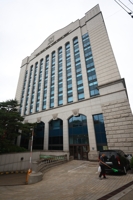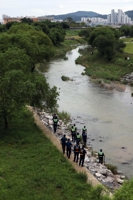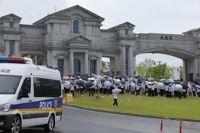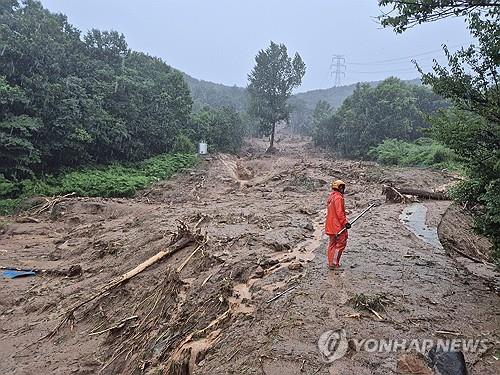Satellite imagery suggests ongoing operation of N. Korea's nuclear reactor: U.S. monitors
SEOUL, Feb. 19 (Yonhap) -- North Korea's plutonium-producing nuclear reactor appears to be in operation, two U.S. monitoring websites have said, citing recent satellite imagery that observed snowmelt at the facility.
Beyond Parallel, a project of the Washington-based Center for Strategic and International Studies, reported Friday thermal infrared satellite imagery from Jan. 27 and Feb. 4 showed the discharge of warm water from the 5-megawatt reactor at Yongbyon nuclear complex, suggesting the reactor and its cooling system are in operation.
The North previously reprocessed spent fuel rods from the reactor to produce weapons-grade plutonium.
The reactor's cooling discharge pipe is "ice-free," and the temperature of the water being discharged from the reactor is "warmer than that of Kuryong River" that flows alongside the complex, the report said.
"Because of this temperature difference, the area where the water from the reactor discharges into the river has not iced over. In contrast, the deeper areas of the river remain frozen," it said.
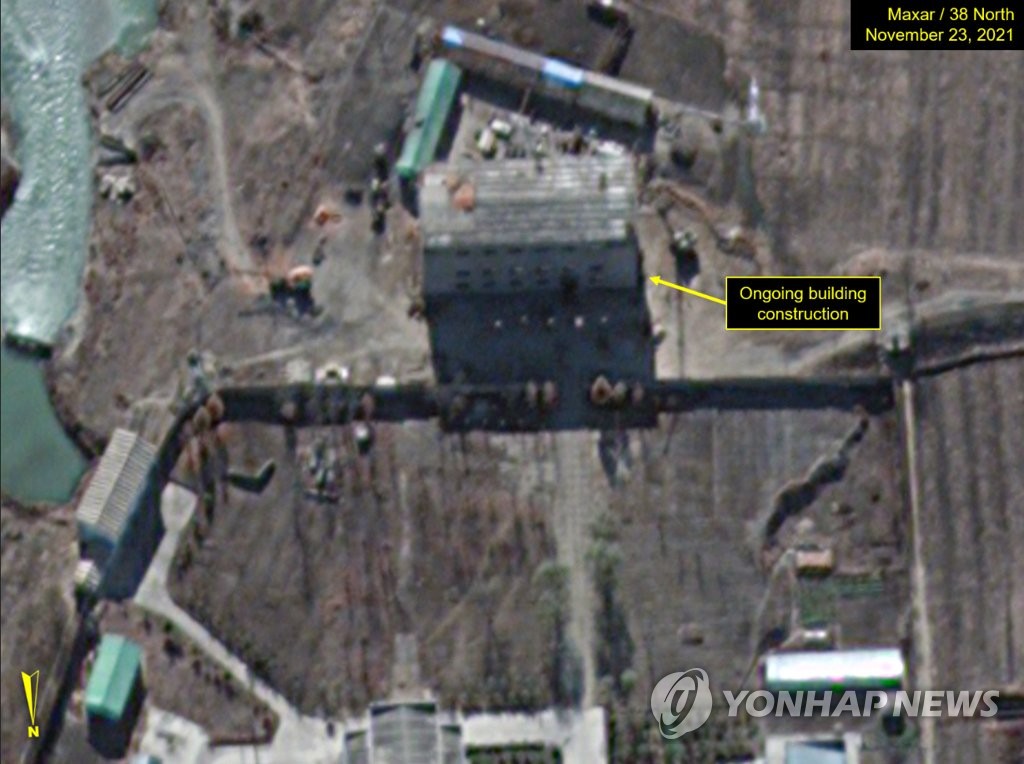
This satellite image, released by 38 North on Nov. 24, 2021, shows North Korea's Yongbyon nuclear complex, north of Pyongyang. North Korea appears to be continuing the operation of a 5-megawatt nuclear reactor at the complex, the U.S. monitoring website said the same day, citing the release of steam and water seen in recent satellite imagery. (PHOTO NOT FOR SALE) (Yonhap)
The website, however, noted that the thermal analysis only helps suggest the reactor, the Radiochemistry Laboratory and the centrifuge plant are "occupied," rather than "operational" in a sense that certain significant activities are taking place.
"If (they) were operational, a much more rapid and generalized melting of snow than is observed in the current thermal and multispectral imagery is expected ... they would exhibit stronger thermal patterns," it said.
38 North, another monitoring website, on Thursday offered a similar analysis based on a Feb. 1 satellite imagery that detected snowmelt on the southern roof of the reactor building and nearby support buildings.
It also mentioned the continued warm water discharge has been observed since late December.
The website said, while the uranium enrichment plant has shown no snowmelt on the roofs of the centrifuge halls, it does not mean that the centrifuges were not in operation, as the area is more tightly controlled to not let out enough heat to cause snow to melt.
In August last year, the International Atomic Energy Agency (IAEA) said in its annual report the Yongbyon reactor appeared to be in operation since July.
North Korea has staged six nuclear tests with its last test being conducted in September 2017. Nuclear negotiations between the U.S. and the North have remained stalled since the 2019 Hanoi summit between the two nations ended without a deal.
elly@yna.co.kr
(END)
-
 (Yonhap Interview) U.S. official renews 'ironclad' security commitment, but calls on S. Korea to beef up its own defense
(Yonhap Interview) U.S. official renews 'ironclad' security commitment, but calls on S. Korea to beef up its own defense -
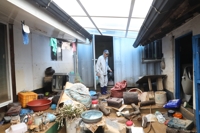 Torrential rain pounds S. Korea for 4th day; over 7,000 seek temporary shelters
Torrential rain pounds S. Korea for 4th day; over 7,000 seek temporary shelters -
 (2nd LD) Death toll rises as heavy rains cause landslide; nat'l firefighting mobilization order issued
(2nd LD) Death toll rises as heavy rains cause landslide; nat'l firefighting mobilization order issued -
 Special counsel indicts Yoon on charges of power abuse in martial law declaration
Special counsel indicts Yoon on charges of power abuse in martial law declaration -
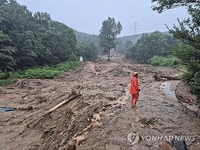 (3rd LD) Death toll rises sharply as heavy rains trigger deadly landslides in Sancheong
(3rd LD) Death toll rises sharply as heavy rains trigger deadly landslides in Sancheong
-
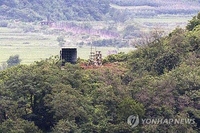 (News Focus) Seoul, Washington extend dialogue overtures to Pyongyang; ball in N. Korea's court
(News Focus) Seoul, Washington extend dialogue overtures to Pyongyang; ball in N. Korea's court -
 Lee's presidential win heralds return to engagement with defiant N. Korea
Lee's presidential win heralds return to engagement with defiant N. Korea -
 N. Korea's confirmation of troop deployment spawns speculation about Kim-Putin summit
N. Korea's confirmation of troop deployment spawns speculation about Kim-Putin summit -
 6 months into troop deployment to Russia, N. Korea rewarded with key military tech, economic aid
6 months into troop deployment to Russia, N. Korea rewarded with key military tech, economic aid


